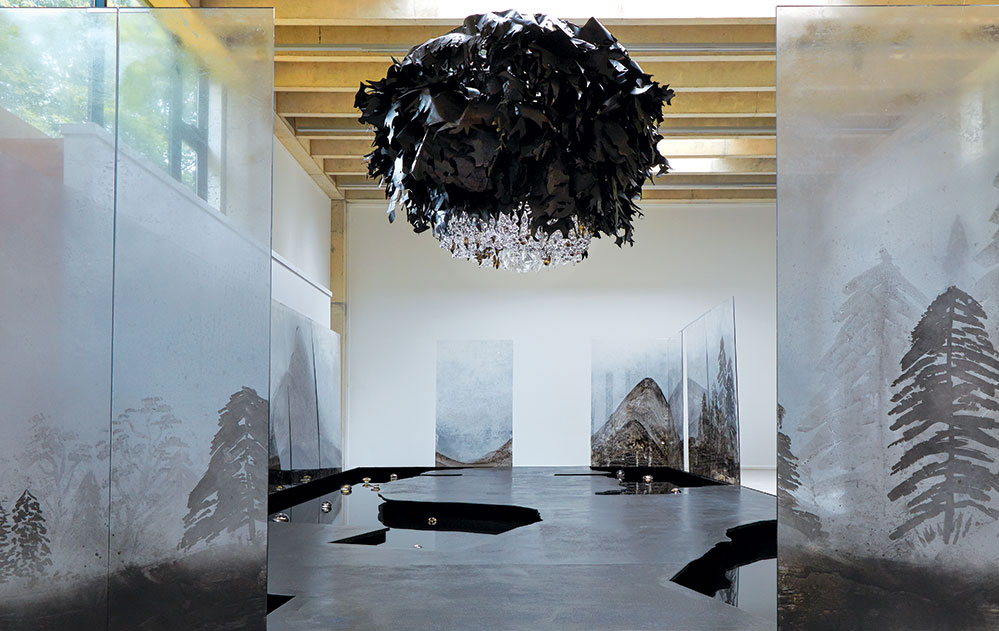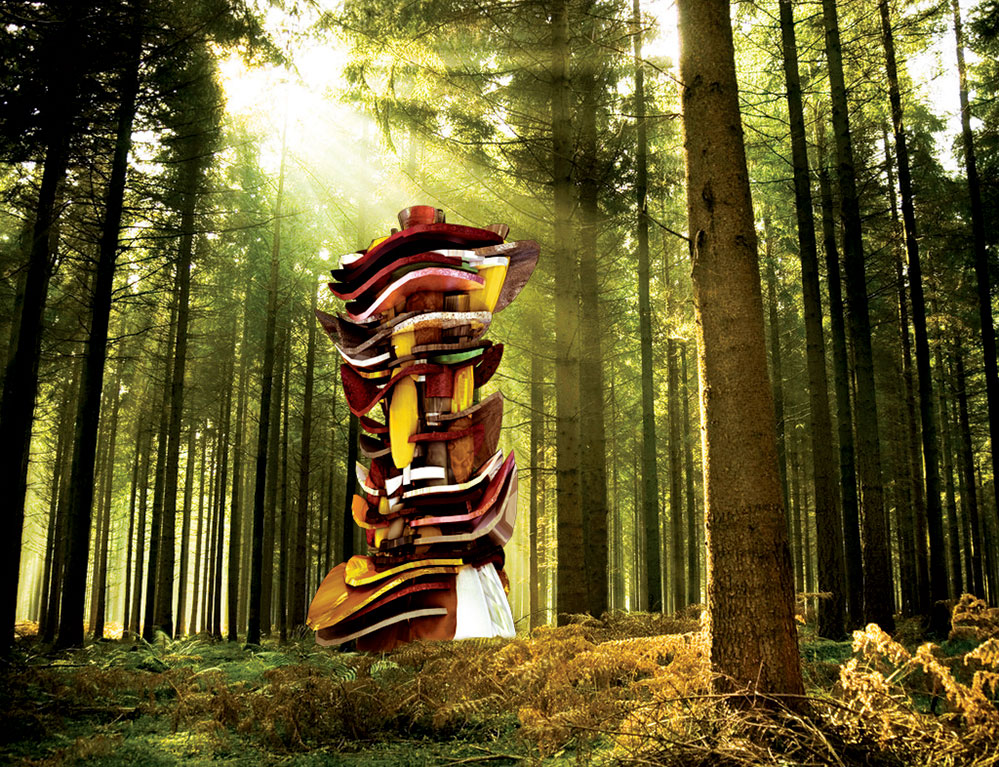A Stately English Home Becomes the Unlikely Setting for an Outdoor Exhibition of Chinese Sculptures
Jun 30, 2016

Public art excites because it is meant to stimulate and entice, to bend the rules of a walled museum, to issue a compelling invitation to explore the nature of its surroundings, and of oneself. The Cass Sculpture Foundation proves the point this summer by putting on Britain’s first big outdoor exhibition of newly commissioned monumental sculpture by the emerging generation of Chinese artists. From July 3 the sculptures will be on display in the foundation’s 26 acres of grounds on the 12,000-acre estate that surrounds Goodwood House, the stately home of the Duke of Richmond in West Sussex, near London.
The exhibition is called A Beautiful Disorder. The title is an expression used in a letter by the French artist Jean Denis Attiret in 1743. Attiret was describing the ability of Chinese gardens to provoke often mutually contrary sensations by employing a series of theatrical framing devices. The technique is called jiejing in Mandarin, meaning borrowed scenery. So the Cass Sculpture Foundation exhibition comprises a series of borrowed scenes, which the visitor encounters unexpectedly while strolling along the paths that wind though the wooded grounds, leading to sheltered groves or suddenly opening up to reveal rural vistas. Each of the 15 works on show is an expression of Chinese culture, society and politics as seen by the generation of artists born in the modern era of reform in China.

One of the sculptors is rising star Cheng Ran, who was born in Inner Mongolia. Cheng also writes novels, composes music, shoots videos and even turns his hand to performance art. Spotlights play on his Crossroads to recreate the interaction between the setting sun and the landscape. Cheng explores the physical boundaries that comprise a sculpture, allowing viewers to become part of the work by experiencing a poetic and dream-like reality while enveloped in his cinematographic play with lights. It’s a metaphor for contemplation of society and the choices people make – hence the title. “A sculptural work is not only defined by the material used,” says Cheng, “it’s a marriage between time, light and memories, in this time, and now.”
Guangzhou-born Song Ta grabs your attention with an eccentric but clever piece entitled Why Do They Never Take Colour Photos? It is an enlarged bust of Chairman Mao with all the colour leached out. The surrounding vegetation is spray-painted a neutral grey to match. Song’s intention is to carve a black-and-white representation out of the real world, set against a richly verdant background. It’s a tour de force of Song’s wicked sense of humour.
Fun is built large in Zhao Yao’s A Sculpture of Thought. It is a sculpture like a climbing frame, which combines a childlike sense of wonder with a fascination with kinetic potential. Zhao appropriated the structure of the work from an illustration in a children’s book that is meant to promote cognitive development. In so doing, he wittily turns an educational device into a work of art, and vice-versa.

Wang Yuyang’s six-metre-tall sculpture, Identity, appears at first to be the artist’s rendition of a grotesque plant from another planet. But it is actually Wang’s own version of Karl Marx’s Das Kapital, the economic and political theory being reconstructed in various materials including brass, iron, concrete and marble. The materials, form and title are determined by rendering the text of Das Kapital into binary numbers.
The Cass Sculpture Foundation’s executive director, Clare Hindle, says: “A Beautiful Disorder is a landmark for us, as it marks the first time we are commissioning works for a major exhibition by international artists.” The foundation gets its money from philanthropists, from selling sculpture and from doing consulting work, but takes no profit. All of the works shown in A Beautiful Disorder are for sale. The artist and the foundation will share the proceeds of each sale equally. The foundation will use its share for new commissions. In the past 23 years, the foundation has raised more than £43 million and invested in the works of some 250 artists.





























